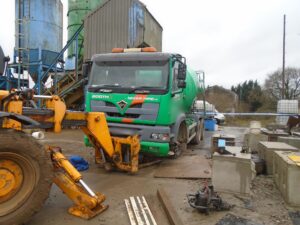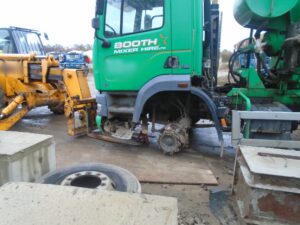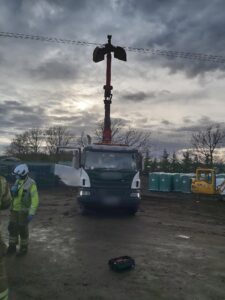Company fined after HSE inspection finds wood dust failures
A company has been fined after an inspection by Britain’s workplace regulator found workers were being exposed to excessive levels of wood dust.
Breathing in wood dust excessively can cause asthma and nasal cancer.
The Health and Safety Executive (HSE) visited Target Furniture Limited’s workshop on Studland Road in Kingsthorpe, Northampton on 26 May 2022 and found significant amounts of wood dust around the site and unsafe machinery, requiring Prohibition Notices to be issued.

Deposits of the dust were found in the sawmill and around most of the woodworking machines, exposing the firm’s employees to potentially harmful consequences.
HSE inspectors found that workers at Target Furniture Limited were also dry sweeping wood dust despite the company purchasing a vacuum cleaner which could take the dust particles out of the room. This further exposed them to wood dust.
A subsequent investigation found the company failed to adequately control and prevent its workers’ exposure to wood dust. They had been visited by HSE four times in six years, leading to advice and enforcement including an Improvement Notice in relation to controlling staff’s exposure to wood dust. Despite this, the firm had an inadequate extraction system on woodworking machinery that was not properly capturing wood dust and they had not provided adequate respiratory protective equipment to protect their workers from wood dust.

Dust extraction and vacuuming instead of sweeping can be some of the measures taken to control exposure to workers. Guidance on working in the woodworking industry is available and an inspection-led campaign to protect workers continues.
Target Furniture Limited, of Studland Road, Kingsthorpe, Northampton, pleaded guilty to breaching Regulation 7(1) of the Control of Substances Hazardous to Health Regulations 2002. The company was fined £14,700 and ordered to pay £4,869.46 in costs at Leicester Magistrates’ Court on 3 April 2024.
HSE inspector Nicholas Moreby said: “The fine imposed on Target Furniture Limited should underline to everyone in the woodworking industry that the courts, and HSE, take a failure to control exposure to harmful substances such as wood dust, and to follow the regulations, extremely seriously.
“Wood dust can cause serious health problems and all businesses need to protect their workers’ respiratory health. We will not hesitate to take action against companies which do not do all that they should to keep people safe.”
Notes to editors:
- The Health and Safety Executive (HSE) is Britain’s national regulator for workplace health and safety. We prevent work-related death, injury and ill health through regulatory actions that range from influencing behaviours across whole industry sectors through to targeted interventions on individual businesses. These activities are supported by globally recognised scientific expertise.
- More information about the legislation referred to in this case is available.
- Further details on the latest HSE news releases is available.



